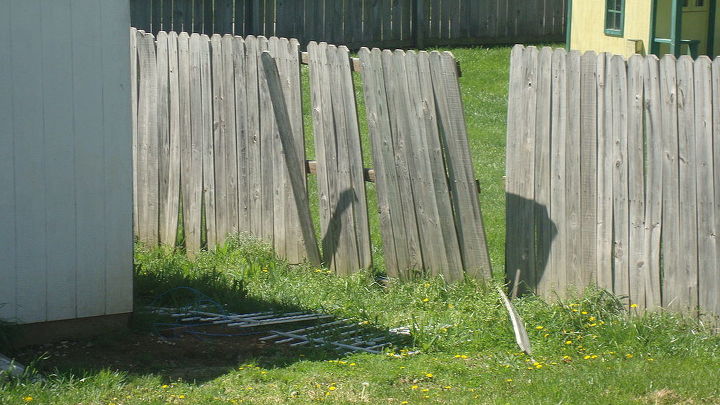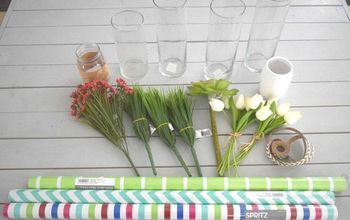How to fix bank at the bottom of my garden where soil is falling away?
Related Discussions
GNATS - How to get rid of them?
Somehow my house and garden got tiny gnats that killed my fuchsia plant and fly everywhere. I have tried ALL the Web recommendations - soap and oil dishes, sand in th... See more
Marigolds growing! Should I pinch the buds?
My marigold plants are growing. I heard that pinching the buds until Autumn will allow them to grow without killing the plant. Is this true?
Growing garlic
Growing our first garlic, should we wait until the leaves are drying out before we pick it? Husband picked first one today along with our first potatoes.
How to keep mice out of your garden?
Hi everyone, I have mice in my garden destroying my vegetables and I have also noticed them in the barn and shed. Please can someone tell me how to prevent them from ... See more
What's the best flower/plant to grow in Texas?
I know that opinions vary, but what's your opinion?!I have great luck w Rosemary plants. Green all year long.
Best way to kill bush/tree after being cut down?
Just moved into a new home. There was a huge thorny bush dragon devouring the mailbox. I slayed the dragon but it is trying to rise up again. How can I make sure it's... See more
Nightmare neighbors
We have the worst neighbors ever! They complain about everything! They hate dogs so they complain every time our dogs bark one time (not exaggerating) they have fabri... See more





You could put up a retaining wall with wall stones or even just a couple row of cinder blocks.
You could use railroad ties or something like that, they hold up really well for a long time.
You could stake it and cover with burlap bags, then hydroseed it to grow roots to stablize the soil.
I agree with the above comments. You need to support that soil that is eroding. You can use just about anything that will give support. Wishing you well.
You have to plant some hearty plants or small trees to hold the dirt from falling. The reason they have fires, the fires burn the shrubs, then the rain, and then the mudslides. California goes through this cycle every year. The fires are flamed by the Sana Anna winds. Then without vegetation to hold the water, they have mudslides. This is the reason your soil is falling. Go to some nursery or Homedepot or Lowe's, and get some plants. Good Luck!
Depending on the size of the area, you either need a retaining wall built, or you can place large rocks at the bottom of the bank and up it, and interplant with some ground cover that will root and hold onto the soil. I have a very large slope which I planted with small shrubs, hosta, etc., very densely, and it seems to be working.
Quickest way to protect the topsoil you have, if the need is urgent, is to get some of that material (think plastic feed sack or trampoline material) and stakes such as are used during road construction to prevent erosion and stake a net to begin catching the dirt, putting the bottom edge of the fabric in a trench dug down through the loose washed down top soil till hard dirt is reached, both to hold what you have and enable you to toss any top soil left below it back onto your garden. (Note: I have seen these fabrics holding back erosion for well over a year when properly staked as road construction all but halts in winter. http://www.srwproducts.com/application/files/masked_images/masked-4742-3625-Stakes_SiltFence_header_middle.jpg )
You may need to rethink the way you plow your garden in order to turn the water runoff -- the direction you plow and how close you plow to the beginning of the slope. Are you actually planting on a slope?
You could literally build a mound at the lower end of your garden where your top soil begins to wash away and use that mound for permanent plants -- strawberries or fig bushes or blue berry bushes-- anything you don't plow up from year to year -- in order to help hold the soil.
Another interim fix, depending upon what level space is available for your garden, might be to dig a shallow but wide ditch back from the beginning edge of the slope and create a scoop/depression in which you can plant grass that you can mow that will turn the water away from the edge of the slope. Unless there is grass on each side of and inside the scooped area, though, garden soil could still wash into the scooped area.
Another fix to avoid building a retaining wall -- though requiring space and either equipment or a lot of work intense -- could be to move the topsoil of your garden to one side, level the harder dirt beneath it and then replace the topsoil.
What you do on a more permanent basis with regard to a retaining wall will depend upon the tilt and length of the slope and what's on/above/below it and how long the bank is and where your property boundary is and what your budget is for the project. If you're building a retaining wall, remember that wood will rot (and you don't really want treated lumber next to your garden anyway) but a concrete block wall will be one you will not need to replace.